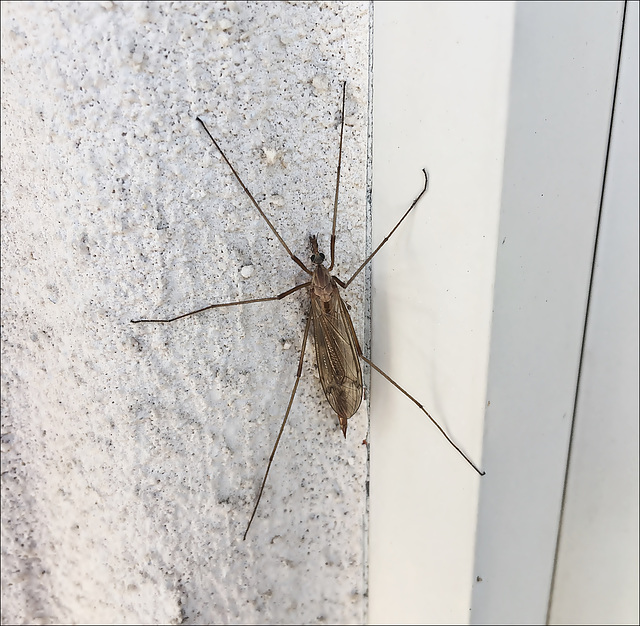Keywords
Crane fly


The common name “mosquito hawk” is sometimes given to these flies; however the name usually comes with the belief that these clumsy, long-legged insects are predators, perhaps on mosquitoes. Nothing could be further from the truth. Crane flies are among the gentlest of insects. Some are nectar feeders, sipping sweet sugars from plants and possibly helping out a little with pollination in the process. Other species lack mouth parts entirely. Instead, the adults live out their short lives relying on fat reserves built up during their underground larval stage.
Keith Burton has particularly liked this photo
- Keyboard shortcuts:
Jump to top
RSS feed- Latest comments - Subscribe to the comment feeds of this photo
- ipernity © 2007-2025
- Help & Contact
|
Club news
|
About ipernity
|
History |
ipernity Club & Prices |
Guide of good conduct
Donate | Group guidelines | Privacy policy | Terms of use | Statutes | In memoria -
Facebook
Twitter

Diet
Adult crane flies do not feed. The larvae are the only feeding forms. They feed on roots of grasses and decaying organic matter. The food sources for the larvae remain abundant due to the regions the insects inhabit, including parts of Atlantic Canada and western provinces like British Columbia near the rainforests of the Pacific Northwest in the U.S.
Life Cycle
Like other true flies, the crane fly undergoes complete metamorphosis with four distinct stages, eggs, larva, pupa and adult. A female crane fly lays up to 300 eggs in the ground. The eggs hatch within two weeks of being deposited. The hatched larvae feed on decaying wood, vegetation, and turf, and may cause damage to plant roots in large concentrations. Typically, the crane fly larvae goes through four instars and overwinters under the ground before pupating in mid-to-late spring, just below the soil surface. When the adult crane flies emerge, they leave behind pupal cases (puparia) which appear to be small, grey sticks. Crane flies adults live for several days, typically just long enough to mate and reproduce.
Larvae
Crane fly larvae are sometimes called “leatherjackets” for the tough skin these insects exhibit during their third and fourth instars. Crane fly larvae feed on the roots of the grasses. Light grey to greenish-brown in colour, the larvae also exhibit irregular black specks on the body. They are cylindrical in shape and taper slightly at both ends. The larvae do not have legs and appear similar to worms. Crane fly larvae range in size from 5 mm in the first instar up to 4 cm in the final instar before pupation.
Sign-in to write a comment.